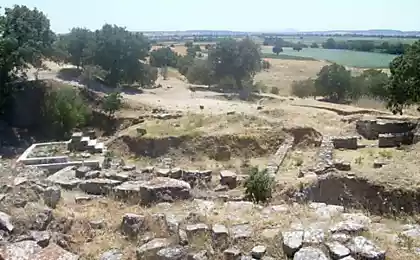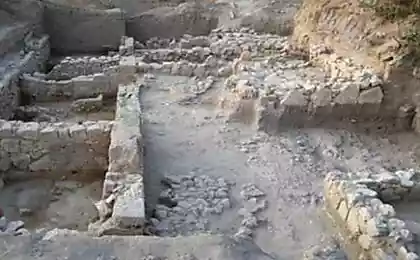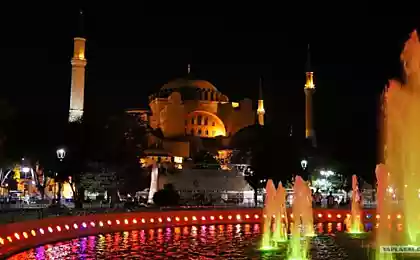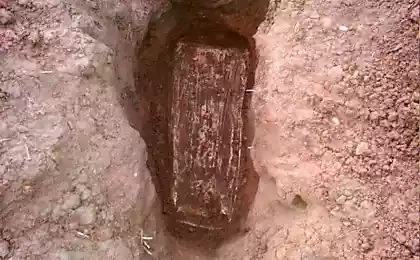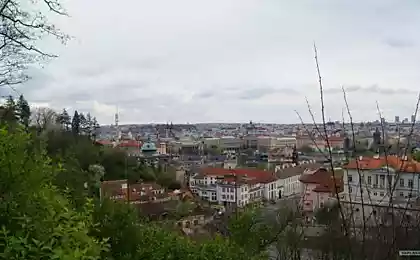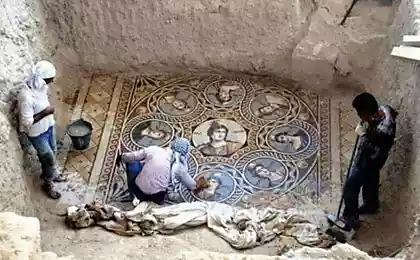484
Near Kerch explored the tower of the flooded city
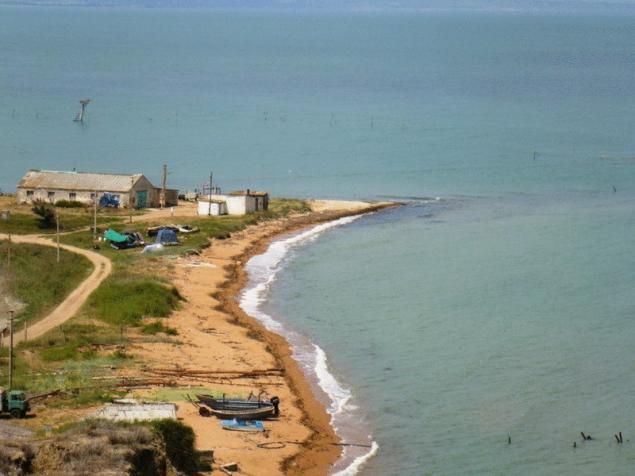
The city of Acre, archaeologists discovered a tower of the IV century BC, the base of which was a wooden construction, not having analogues in the Bosporan fortifications.
Near Kerch, near the village of Naberezhne (Leninsky district of the Crimea), has completed field season of the archaeological expedition, which operates in a flooded sea the city of Acre. This year archaeologists have studied the tower from the second half of IV century BC, About the journal "Science and life" said one of the leaders of the expedition, head of Department of the black sea undersea research centre (Simferopol), candidate of historical Sciences Victor Wheeew. Supervised the excavations also Sergei L. Solovyov (leading researcher of the Hermitage, candidate of historical Sciences) and Sergey V. olkhovskiy (researcher, Institute of archaeology, RAS).
The ancient city of Acre was founded in the late sixth century BC and lasted until the beginning of the III century B. C. It was part of the Bosporan Kingdom. ACRA mentioned by many ancient writers – Strabo, Ptolemy, Stephen of Byzantium, Pseudo-Arrian, Eliya Herodian and others. The city was situated on the shore of the Kerch Strait, on a low headland jutting into the sea at 200-300 meters. During nemfakos transgression (sea level rise) most of the city was flooded. At the same time, the sea destroys all the coastal areas of many antique cities of the Northern black sea, for example, Panticapaeum, Chersonesus, Olbia, Phanagoria, Myrmekion. As the transgression continued for a long time, in these cities almost completely destroyed cultural layers, architectural structures located in the coastal zone. In acre, however, the situation is somewhat different. Due to the fact that she was on low-lying land, and also because of the special wave mode here was destroyed, only the layers and structures of the Roman period and building remains of classical and Hellenistic times is well preserved.
The past two years, archaeologists studying the defensive system of the city. So, for 150 meters was traced defensive wall. Its width is about 2 meters. In height it is released at 1,60–1,70 m. However, the sole of the masonry has not yet been identified, so that the present height of the wall, probably more. The building dates back to the middle of IV century BC, during the second half of this century it was attached to the tower. In her study of archaeologists and focused in the field season of 2014. The tower was flanked the approaches to the settlement from the South-West side. Its area is about 50 square meters. The tower was built of large, about a meter in length, rusticated stone blocks (square stones, the front side of which is left unprocessed and only the edges outlined with a narrow smooth stripe). "At the same rusticated blocks was not only the external face of the tower, but internal. It is not typical for the Bosporan fortifications", – said V. V. Wheeew. A special feature of the tower was a wooden structure that leaned of the wall of the structure. It was a "cage" of the longitudinal and transverse oak logs. "Similar design of that period, nor on the Bosporus, nor in the Northern black sea is unknown," – said the archaeologist. In his opinion, there are two possible explanations the use of wooden "crate" at the base of the tower. A wooden structure could build as protivoanemicescoe measures. However, about any seismic activity in the second half of IV century BC the historical information. Probably need to use the "crate" is due to the high groundwater level. In this case, the logs had to give the tower stability.
In addition, discovered the remains of a staircase that led to the defensive wall. It consisted of 5-6 stone steps. The upper part of the staircase was made of wood – fixed it support.
V. Vakhonev emphasizes that the size and nature of defensive structures allow to count acre major urban center, not a village community, as suggested by some researchers. During excavations of the tower, archaeologists made some interesting finds. So, was found a bronze pendant, terracotta statuette Cora-Persephone, bronze awl, black lacquer bowls with stamped ornament, Sinop and Gerakleyskiy the amphora stamps. Wooden structures in the settlement are well preserved due to the preserving effect that sea water has on organic materials. During earlier excavations, archaeologists found a large number of legumes, nuts, lots of wooden items. So, in 2011-m year, were found a wooden cover. In 2013, the Hellenic – Roman wooden comb good condition. On the one side of the ridge was a small prongs, on the other – large. It was decorated with carved ornament.
Archaeologists plan to continue the study of Acre in the following year. They are going to complete work on the section of the defensive wall and begin excavation of residential development of the IV century BC, "There is, of course, the layers, the very rich finds. So expect new sensations in the next year", – concluded V. Wheeew.
Source: nkj.ru




